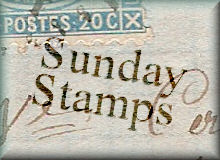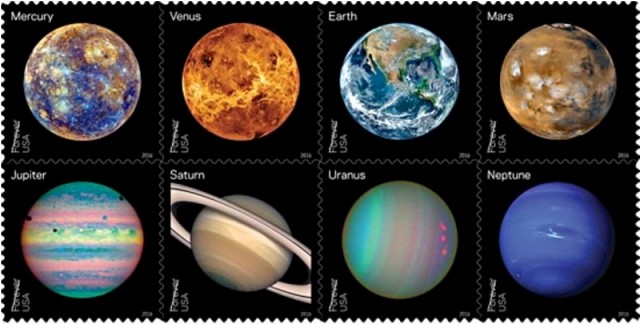Today's subject is "Artists and Illustrators" and it took me a while to figure out what would fit...and I hope I nailed this one right...
Here I have a fantastic cover...sent by Bryon of course, featuring the set of stamps USPS issued last year to commemorate the 100th Anniversary of the Armory Show.
The information I have come from the paper Bryon included (as he always does for which I am extremely grateful!)
Might be a long read since there is a short text on each and every stamp...but I hope you wont be too bored :)
After the International Exhibition of Modern Art known as the Armory Show, opened in New York on February 17, 1913, the work of Marcel Duchamp and other European artists greatly influenced their American counterparts. Like Duchamp, who became a U.S. citizen, modern art soon found a congenial home in America.
(in order of appearance on the cover)
Joseph Stella, Brooklyn Bridge (1919-20)
Joseph Stella, an Italian immigrant, painted multiple images of the Brooklyn Bridge and other New York icons. Brooklyn Bridge was inspired by Stella's experience standing late on night on its promenade. "I felt deeply moved", he later wrote, "as if on the threshold of a new religion or in the presence of a new divinity."
Marcel Duchamp, Nude Descending a Staircase, No.2 (1912).
Charles Demuth, I saw the Figure 5 in Gold (1928)
Charles Demuth created a series of "poster portraits" of friends such as William Carlos Williams, whose poem, "The Great Figure" describes a speeding fire engine. Lines from that work gave Demuth his painting's title. The words "Bill" and "Carlos" appear - the latter on a marquee in the backgroun - and the poet's initials are painted at the bottom.
Marsden Hartley, Painting Number 5 (1914-15)
Marsden Hartley spent time in Germany during World War I, when he painted a series of works sometimes called the German Officer paintings. Painting Number 5 is a composite portrait of Karl von Freyburg, a young German officer who was killed in the war. Symbols related to his identity and personality combine like puzzle pieces.
Aaron Douglas, The Prodigal Son (1927)
Aaron Douglas's modernist illustrations, created for some of the most important books of the Harlem Renaissance - the flowering of African-American culture centered in New York during the 1920's - drew partly on African artistic traditions. His Paintings for James Weldon Johnson's book God's Trombones included The Prodigal Son, which imagines the biblical parable in terms of African-American experience.
Marcel Duchamp, Nude Descending a Staircase, No.2 (1912)
Marcel Duchamp was famous in the US before he ever set foot here. His Nude Descending a Staircase, No. 2 was the most talked-about work at the Armory Show of 1913, an exhibit that introduced many Americans to modern art. Nudes were traditionally depicted bathing or reclining, not as abstract figures going down staircases!
Stuart Davis, House and Street (1931)
The paintings of Stuart Davis were heavily influenced by jazz. His vibrant depiction of contemporary commercial objects such as advertisements and cigarette packages made him an important precursor of the later Pop artists. House and Street presents a street in New York from two angles, forcing the viewer to be in two places at once.
Gerald Murphy, Razor (1924)
In his brief career as an artist, Gerald Murphy produced slightly more than a dozen works, about half of them now lost. His first surviving picture, Razor, presents a razor and other items seen from multiple angles. It is typical of Murphy's work in its flat, stylized depiction of commonplace objects, presented at a larger scale.
John Marin, Sunset, Maine Coast (1919)
John Marin was the preeminent watercolorist of his era. He spent most summers on the rocky coast of Maine, where he painted the sea and sky in their many moods. Marin once wrote in a letter that sunsets on the coast were "the kind - No Artist can paint." But that didn't stop him from trying.
Georgia O'Keeffe, Black Mesa Landscape, New Mexico/Out Back of Marie's II (1930)
Georgia O'Keeffe loved the New Mexico landscape. She spent some time in the upper Rio Grande Valley near the village of Alcalde, visiting her friend Marie Garland, and made several paintings there. "It was the shapes of the hills there that fascinated me," O'Keeffe said. "The reddish sand hills with the dark mesas behind them."
Arthur Dove, Fog Horns (1929)
Arthur Dove was one of modern art's earliest abstract painters. Fog Horns shows his interest in synesthesia, the phenomenon of stimulating one sense by means of another. The gray background suggests the ocean, while concentric rings of paint grow progressively lighter as they emanate outward from the center, conjuring foghorns blaring in the mist.
Charles Sheeler, American Landscape (1930)
In 1927, when Charles Sheeler received a commission from an advertising agency to photograph the Ford Motor Company plant in River Rouge, Michigan, he concentrated on the power of the machines and the plant architecture, emphasizing the impersonal grandeur of the scene. He went on to explore this vision in several paintings, including American Landscape.
Man Ray, Noire et Blanche (1926)
In Paris, American artist Man Ray made several iconic images of a woman known as Kiki di Montparnasse. Noire de Blanche is from a series of photographs juxtaposing Kiki's face with a West African mask. Man Ray and his contemporaries turned to African artifacts partly from a sense that Western art had exhausted its possibilities.
well, hope you liked at least some of the paintings!
for more artistic stuff, visit Viridian's page! And I apologize in advance that I will take at all the posts and leave my comments later today or tomorrow



Cool! I saw these stamps but never purchased them. Now I wish I did. thank you for participating.
ReplyDeleteA selection of artists that I would never have come across had it not been for your stamps.
ReplyDeleteIt's nice to see those stamps all on a cover like that.
ReplyDeleteMy favourites are the Duchamp, which I once blogged about in its own right (not as a stamp), and the wonderful Man Ray.
ReplyDeleteThese are fantastic stamps and certainly not boring! I don't think I've seen any of them before.
ReplyDeleteThis is a wonderful selection.
ReplyDeleteYou nailed it perfectly right!!
funilly enough i would have said i never have seen these, until i noticed two of them on a postcard i've just scanned :) looks very impressive all in one place - my fav is the black mesa landscape cos of the contrasts
ReplyDelete